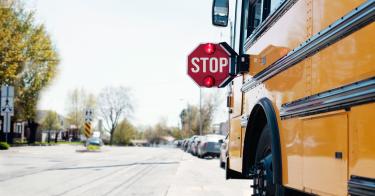After committing $2 trillion in COVID-19 relief through the “Phase 3” bill in March, some in Congress are talking about doing this again in phase 4. And the education lobby is watching closely.
Before Education Secretary Betsy DeVos announced how the $13.5 billion for K-12 schools from phase 3 would be distributed, teacher unions and other special-interest groups wrote Congress asking for another $175 billion—approximately three times Washington’s annual K-12 budget.
Public schools will be facing economic headwinds along with everyone else in the public and private sectors. Groups that grab for another piece of the pie rather than recommend meaningful reforms should be a sign to policymakers of the need for substantive change.
Each year, schools receive some $600 billion from taxpayers, with Washington accounting for just 8.5% of that amount. State budget cuts arising from this financial crisis will not be because of reduced federal spending—that’s sharply higher. Rather, adjustments will result from reductions in state and local tax revenues caused by the lockdowns. States spend between one-fourth and one-half of their budgets on K-12 schools every year, so there are few places where adjustments can be made before turning to schools.
Even Washington’s seemingly untethered generosity can’t protect schools for an indeterminate period during a financial crisis of undefined proportions. Given the current $3.8 trillion (with a “t”) U.S. budget deficit and our whopping $25 trillion national debt, it’s a fiscal impossibility.
Figures this large lose their impact over time because it’s hard to visualize numbers so big. The good news is that states recovered from the last recession, despite, it seemed, Washington’s help. U.S. Department of Education data show some states were still spending less per student in 2012-2013 than in 2007-2008, even though the feds provided some $77 billion in 2009 to cope with the Great Recession. By 2017, however, all states but three were spending more than they were in 2000, again in real dollars. Go back to 1970, and real per student spending has more than doubled.
The recovery and spending increases were uneven among states, but that is to be expected because every state’s economy is different. Today, Education Department data indicate we are, on average, spending more per student than at any point in U.S. history—some $15,000 per child after adjusting for inflation. Those who say that such increases are required for student achievement have to contend with the fact that the most reliable measures of K-12 success show that higher spending hasn’t worked so far.
These figures reveal that the Great Recession only temporarily stalled the regular increases schools have seen for as long as such records have been kept.
Washington cannot insulate every school from the ups and downs of the economy. Nor should it. What federal lawmakers can do is offer states and schools flexibility with their spending and incentivize local schools to adjust their budgets so that they are ready for the next downturn.
The CARES Act allows states such flexibility. The act allows schools to save more of their federal spending for children from low-income families until next year. Schools can use money for teacher training to help them prepare effective virtual lessons. The Education Department also waived some restrictions on purchasing learning technology.
These provisions won’t solve every problem, but they do let school leaders be more creative with taxpayer resources. State lawmakers should follow this example and revise complex funding formulas that require spending only on certain education areas. This, in turn, will allow schools to be more responsive to changing conditions.
Of course, all of this flexibility should be paired with audits to make sure the funds are used appropriately. Now as always, the goal of everyone in the education sector should be to use resources effectively for the benefit of children.
This piece originally appeared in The Washington Times




